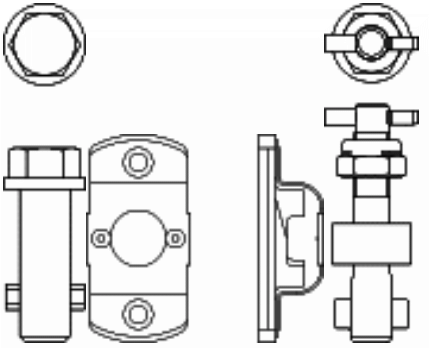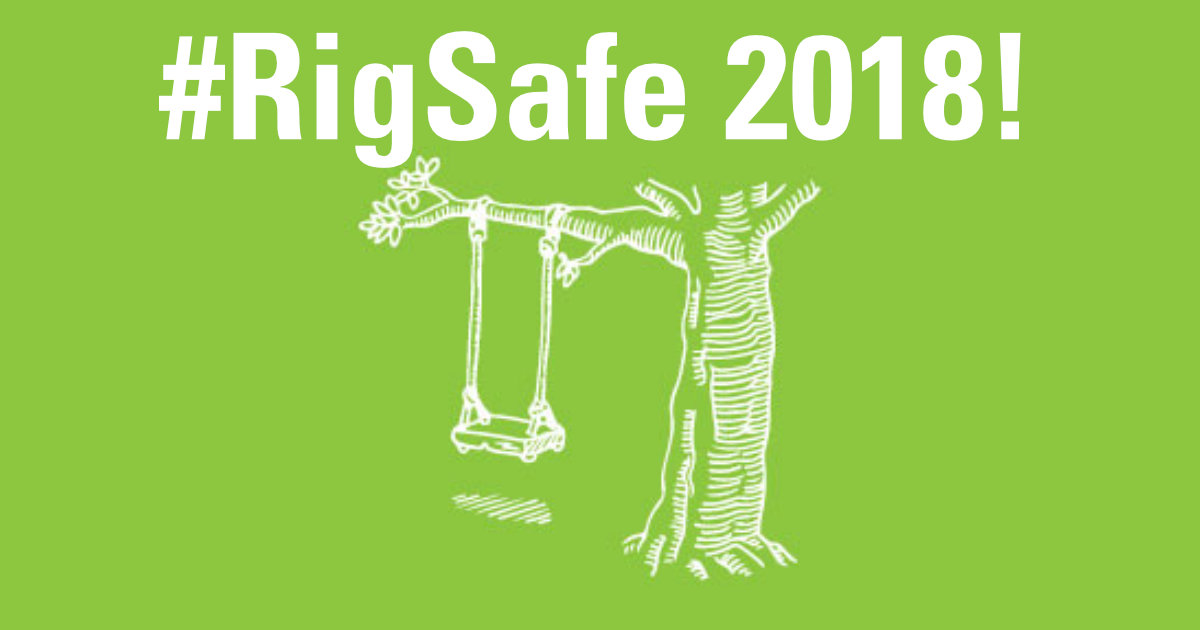
Today is the third annual #RigSafe day! You may be seeing the #rigsafe hashtag floating around today because of USITT’s campaign to promote rigging and stage safety throughout the theatrical and entertainment industry.
Today would be an excellent day to take time to inspect your equipment. Round slings, chain bags, truss – are they in good condition? If not, please take a moment to replace that equipment.
For truss, our friends at James Thomas Engineering have provided us a checklist for qualified professionals to review their truss. Have a great #RigSafe Day!
End Plates
The recommended method for checking plates is to place the thin edge of a steel rule diagonally across the face of the plates. If any bends are detected in the plate do not use the truss.
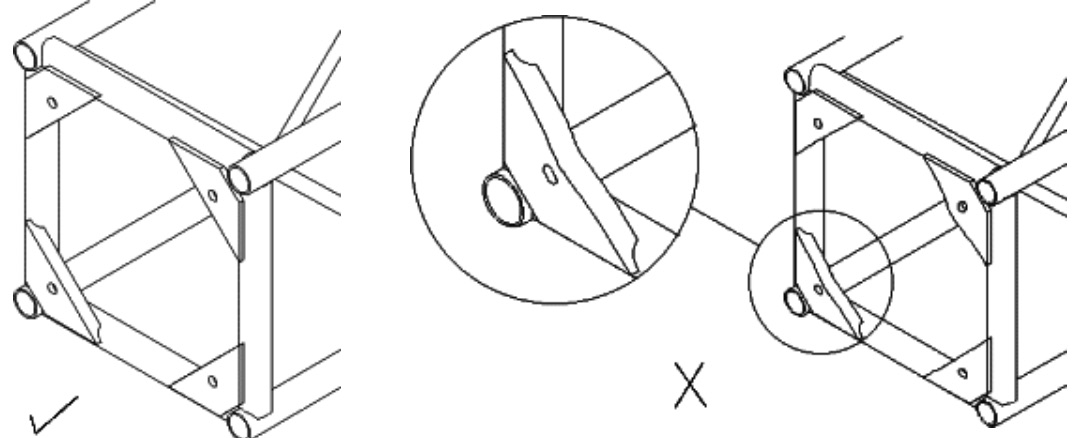
Welding
All welds should be checked visually with the aid of a magnifying glass or with the use of a dye penetrant flaw finder or weld checker to help in the detection of cracks. If any cracks are found in the weld, do not use the truss.
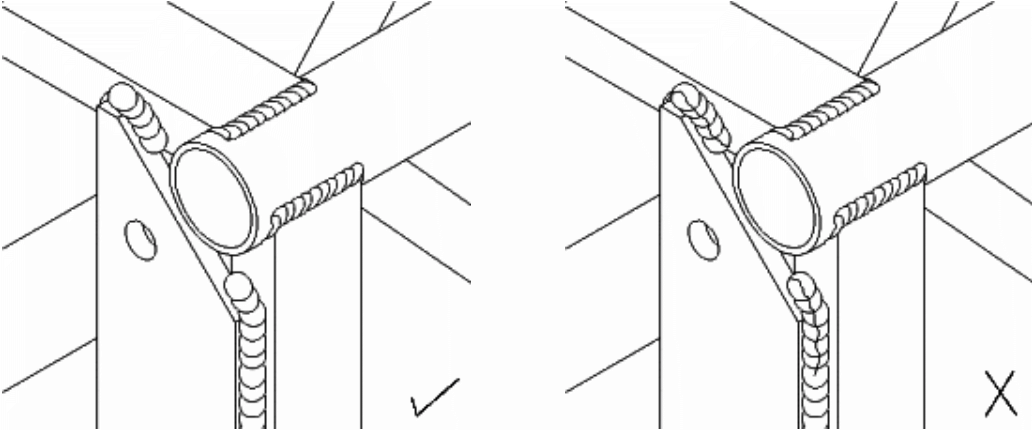
Tubes
Bends
There are several points to be visually inspected on both the main and diagonal tubes. First check all tubes for any signs of bending (please note that during manufacture rippling in the main tubes will unavoidably occur). If the main or diagonal tubes show any visible evidence of being bent, do not use the truss.
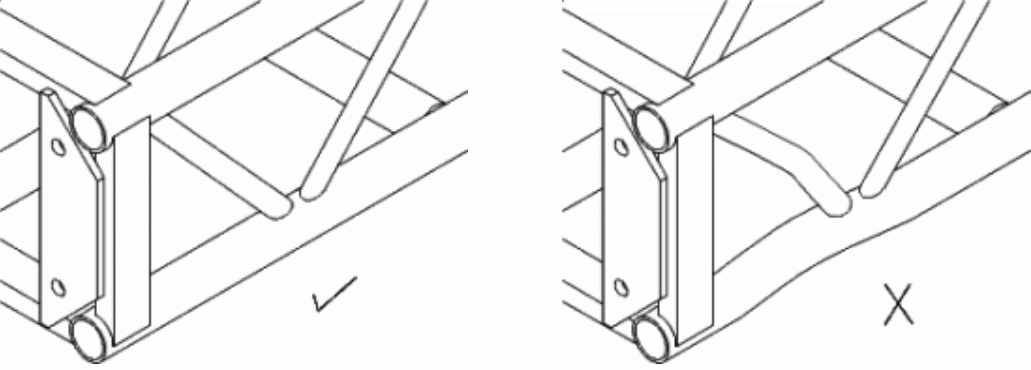
Missing Diagonals
If any Diagonals have been badly damaged or are missing, do not use the truss.
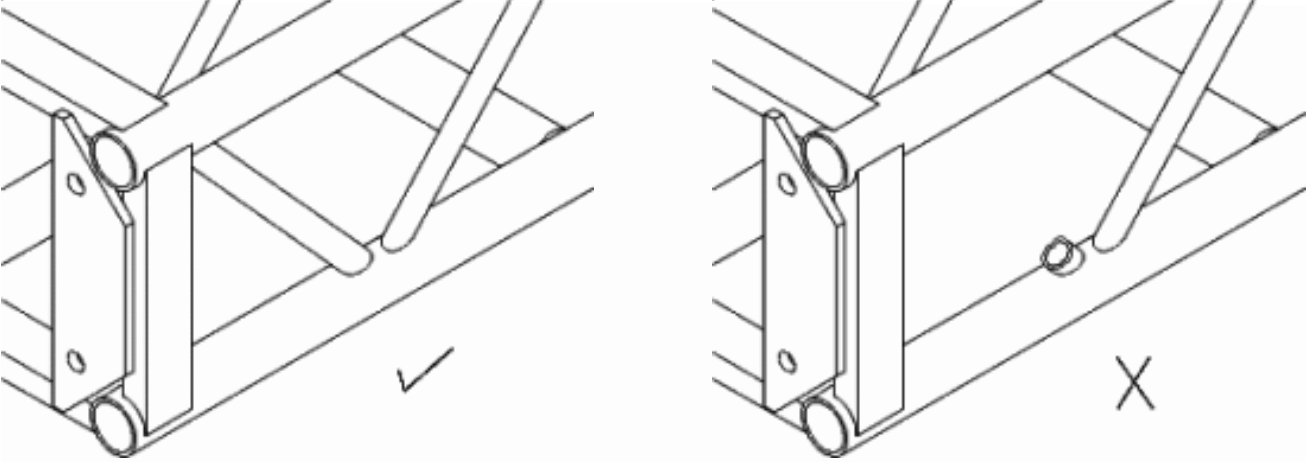
Dents and Chews
Damage is often caused when the truss is not stored correctly or from other objects being dropped onto the truss. Visually check all the tubes for dents, damaged ends, and chew marks. Use the figures below as a guide. If any defects are visible in the tubesthen the truss should not be used.

After the truss has been in circulation, it will start to wear. Make a thorough inspection of all the above and also general condition. The wall thickness and the ends of the tubes will need special attention. Check for excessive wear in the tube.
Camloc Fasterners
- Male Studs 34F Series: Check for signs of wear, damage, twisted, missing adjustment screws, or missing cross pins. Replace any missing parts, or replace the fastener if damage is present.
- New Type Quick Release Bolts: Check for signs of wear, damage, twisted, or missing pins. Replace any missing parts, or replace the fastener if damage is present.
- Female Receptacle 34F Series: Check for loose or missing nuts and screws. Re-tighten the nuts and screws if they are loose or replace them if they are missing. Check for excessive wear at the point that the Camloc pin rests inside the Receptacle.
M16 High Tensile Nut And Bolt Fixings
Check for signs of wear, damage, twisted or missing nuts and bolts. Regularly check the condition of the bolt as it will lose an amount of thread every time it is used. Replace any missing parts, or replace the nut and bolt, if damage is present.
Truss Identification Labels
All trusses should have an identification label present in order that you can relate the following: Date of manufacture, Serial No, Truss type, and specifications. Please note that label must not be removed
